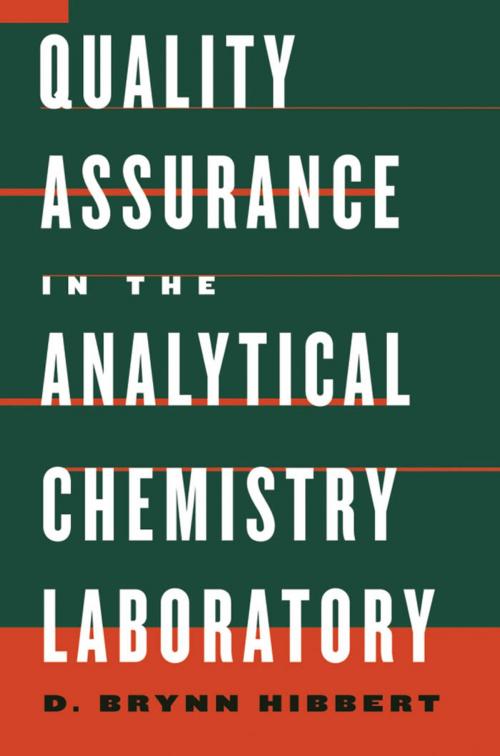Quality Assurance in the Analytical Chemistry Laboratory
Nonfiction, Science & Nature, Science, Chemistry, Analytic| Author: | D. Brynn Hibbert | ISBN: | 9780190289942 |
| Publisher: | Oxford University Press | Publication: | March 29, 2007 |
| Imprint: | Oxford University Press | Language: | English |
| Author: | D. Brynn Hibbert |
| ISBN: | 9780190289942 |
| Publisher: | Oxford University Press |
| Publication: | March 29, 2007 |
| Imprint: | Oxford University Press |
| Language: | English |
Analytical chemical results touch everyones lives can we eat the food? do I have a disease? did the defendant leave his DNA at the crime scene? should I invest in that gold mine? When a chemist measures something how do we know that the result is appropriate? What is fit for purpose in the context of analytical chemistry? Many manufacturing and service companies have embraced traditional statistical approaches to quality assurance, and these have been adopted by analytical chemistry laboratories. However the right chemical answer is never known, so there is not a direct parallel with the manufacture of ball bearings which can be measured and assessed. The customer of the analytical services relies on the quality assurance and quality control procedures adopted by the laboratory. It is the totality of the QA effort, perhaps first brought together in this text, that gives the customer confidence in the result. QA in the Analytical Chemistry Laboratory takes the reader through all aspects of QA, from the statistical basics and quality control tools to becoming accredited to international standards. The latest understanding of concepts such as measurement uncertainty and metrological traceability are explained for a working chemist or her client. How to design experiments to optimize an analytical process is included, together with the necessary statistics to analyze the results. All numerical manipulation and examples are given as Microsoft Excel spreadsheets that can be implemented on any personal computer. Different kinds of interlaboratory studies are explained, and how a laboratory is judged in proficiency testing schemes is described. Accreditation to ISO 17025 or OECD GLP is nearly obligatory for laboratories of any pretension to quality. Here the reader will find an introduction to the requirements and philosophy of accreditation. Whether completing a degree course in chemistry or working in a busy analytical laboratory, this book is a single source for an introduction into quality assurance.
Analytical chemical results touch everyones lives can we eat the food? do I have a disease? did the defendant leave his DNA at the crime scene? should I invest in that gold mine? When a chemist measures something how do we know that the result is appropriate? What is fit for purpose in the context of analytical chemistry? Many manufacturing and service companies have embraced traditional statistical approaches to quality assurance, and these have been adopted by analytical chemistry laboratories. However the right chemical answer is never known, so there is not a direct parallel with the manufacture of ball bearings which can be measured and assessed. The customer of the analytical services relies on the quality assurance and quality control procedures adopted by the laboratory. It is the totality of the QA effort, perhaps first brought together in this text, that gives the customer confidence in the result. QA in the Analytical Chemistry Laboratory takes the reader through all aspects of QA, from the statistical basics and quality control tools to becoming accredited to international standards. The latest understanding of concepts such as measurement uncertainty and metrological traceability are explained for a working chemist or her client. How to design experiments to optimize an analytical process is included, together with the necessary statistics to analyze the results. All numerical manipulation and examples are given as Microsoft Excel spreadsheets that can be implemented on any personal computer. Different kinds of interlaboratory studies are explained, and how a laboratory is judged in proficiency testing schemes is described. Accreditation to ISO 17025 or OECD GLP is nearly obligatory for laboratories of any pretension to quality. Here the reader will find an introduction to the requirements and philosophy of accreditation. Whether completing a degree course in chemistry or working in a busy analytical laboratory, this book is a single source for an introduction into quality assurance.















